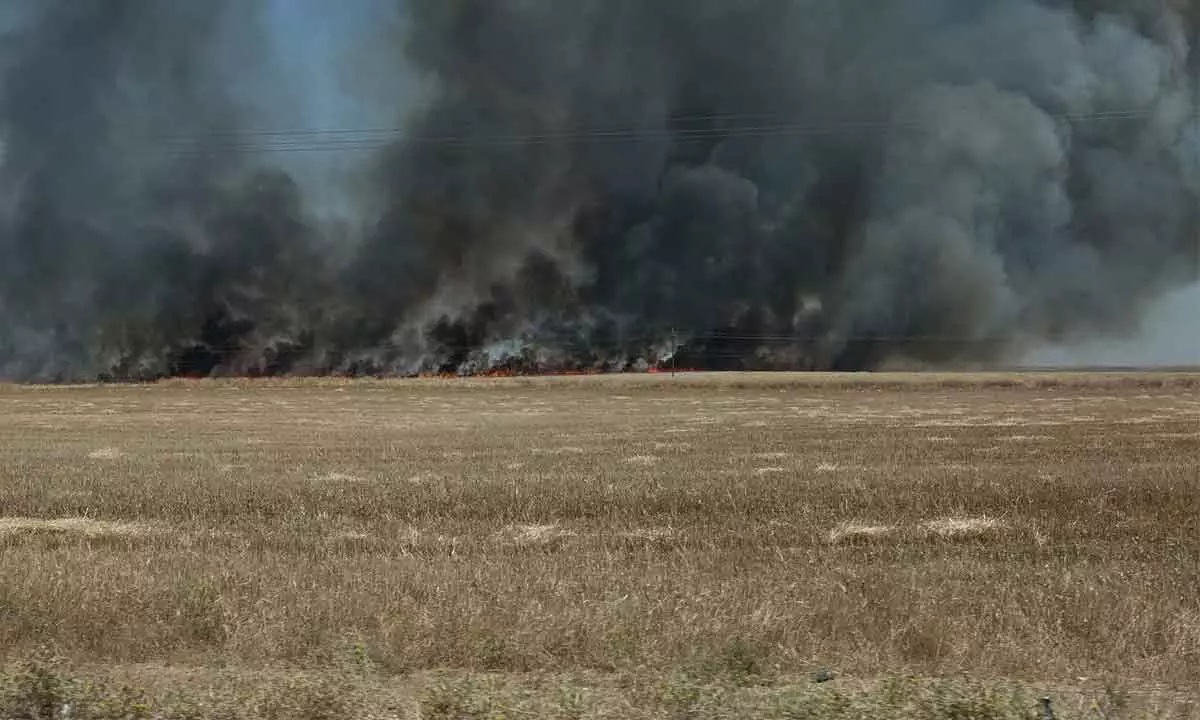Improve rural air quality before the time bomb explodes
There is an alarming drop in air quality in rural India in terms of NO2 analysis
image for illustrative purpose

There is an alarming drop in air quality in rural India in terms of NO2 analysis. This needs immediate attention as NO2 is a strong oxidizing agent that could form highly toxic nitric acid and organic nitrate. As of now, rural sources account for 41 per cent of the overall NO2 pollution, of which 45 per cent and 40 per cent are from transportation and power sectors, respectively. As these sources also impact the industrial and economic uplift of a nation, an analysis of the interiors show distinct seasonal changes with the highest value (2.0 × 1015 molecules per cm2) in winter and the lowest in monsoon (1.5 × 1015 molecules per cm2) seasons. At least, that’s what a recent study by researchers at IIT Kharagpur has suggested.
The study strongly advocated the need for action towards improving rural air quality in order to reduce the impact of air pollution on the country’s large rural population. Although NO2 is a non-abundant gas, its indirect impact on global climate change is likely to be greater, with a net cooling effect attributed to the oxidation-fueled aerosol production. NO2 levels in the troposphere can alter ozone formation, contribute to nitrate aerosol formation, and acid deposition and affect regional climate, the study points out. The Centre for Ocean, River, Atmosphere and Land Sciences (CORAL) of IIT Kharagpur analyzed the significant impact of urban pollution on the air quality of rural India by differentiating and assessing the depth of air pollution in rural India.
We usually think the atmospheric pollution exists only in cities or it is just an urban threat. The air quality standards in rural regions are often neglected. Analysis suggests that it is time to shift our focus to rural regions and examine the pollution levels and health issues prevalent there. This is paramount for a country like India, as about 67 per cent of the country’s population (947 million) stays in the interiors as of 2020.
The decline in air quality in rural India may still not be beyond the threshold levels now, except in regions like Delhi and the suburbs, lower IGP and eastern India. However, given the positive trend of NO2 concentration, the high rate of urbanization and relocation of industries to suburbs, growing population and development activities, other regions would also cross the pollution threshold and can impact the health of its people. As this is of real concern, appropriate action to control the atmospheric pollution in rural India should be the focus area of the authorities. Mind you, air pollution is one of the biggest problems in the country’s major cities. Comparison of pollutant-wise highest health risk values show that NO2 is about 19 times more harmful than Particulate Matter (PM) and about 25 times riskier than SO2. People residing in the regions of high NO2 such as in the proximity of power plants, industries, cities, and in the areas above the permissible limit, are at a higher risk of adverse health effects like asthma, bronchitis, pneumonia and cardiovascular diseases. These can be avoided provided we take the first step towards making the surroundings healthier with an effective plan of action.

